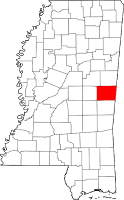 [Image: Screen-grab from what3words].
[Image: Screen-grab from what3words].
Using the bizarre three-word addressing system known as what3words, the now-destroyed curb in Hayward, CA, mentioned in the previous post, is located at a site called “chill.once.waddle.”
As you can tell, of course, what3words is not a descriptive language, and these phrases are not intended to mean anything: they are simply randomly-generated sets of words used to give any location on earth a physical address.
As Quartz explained the system back in 2015, it is, at heart, “a simple idea”:
…a combination of three words, in any language, could specify any three meter by three meter square in the world—more than enough to designate a hut in Siberia or a building doorway in Tokyo. Altogether, 40,000 words combined in triplets label 57 trillion squares. Thus far, the system has been built in 10 languages: English, Spanish, French, German, Italian, Swahili, Portuguese, Swedish, Turkish, and, starting next month, Arabic… All together, this lingua franca requires only five megabytes of data, small enough to reside in any smartphone and work offline. Each square has its identity in its own language that is not a translation of another. The dictionaries have been refined to avoid homophones or offensive terms, with short terms being reserved for the most populated areas
The addresses are poetically absurd—shaky.audit.detail, salsa.gangs.square, dozed.lamps.wing.
I mention this, however, because I meant to post last month that “Mongolia is changing all its addresses to three-word phrases.” Again, from Quartz:
Mongol Post is switching to the What3Words system because there are too few named streets in its territory. The mail network provides service over 1.5 million square km (580,000 square miles), an area that’s three times the size of Spain, though much of that area is uninhabited. Mongolia is among the world’s most sparsely populated countries, and about a quarter of its population is nomadic, according to the World Bank.
While, on one level, in an age of stacks and infinite addressability, this seems like a thrilling, almost science-fictional step forward for locating and mapping physical spaces, it also seems like an alarming example of national over-reliance on a proprietary address system, one that the state itself ultimately cannot control.
Imagine a nation-state losing influence over the physical coordinates of its own territory, or a population stuck living inside an outdated, even discontinued address network, and needing to start again, from scratch, renaming all its streets and buildings—not to mention all the lost local histories and significance of certain place names, from avenues to intersections, that need to be reclaimed.
Granted, in this particular case, the system is being adopted precisely because “there are too few named streets” in Mongolia, that does not change the fact that the country will soon be dependent upon the continued existence of what3words for its packages to be delivered, its services to run, and its spatial infrastructures to function. It will be interesting to see how the transition to the use of these peculiar place tags goes—but, even more so, how this decision looks in five or ten years’ time.

 [Image: Screen-grab from
[Image: Screen-grab from 


